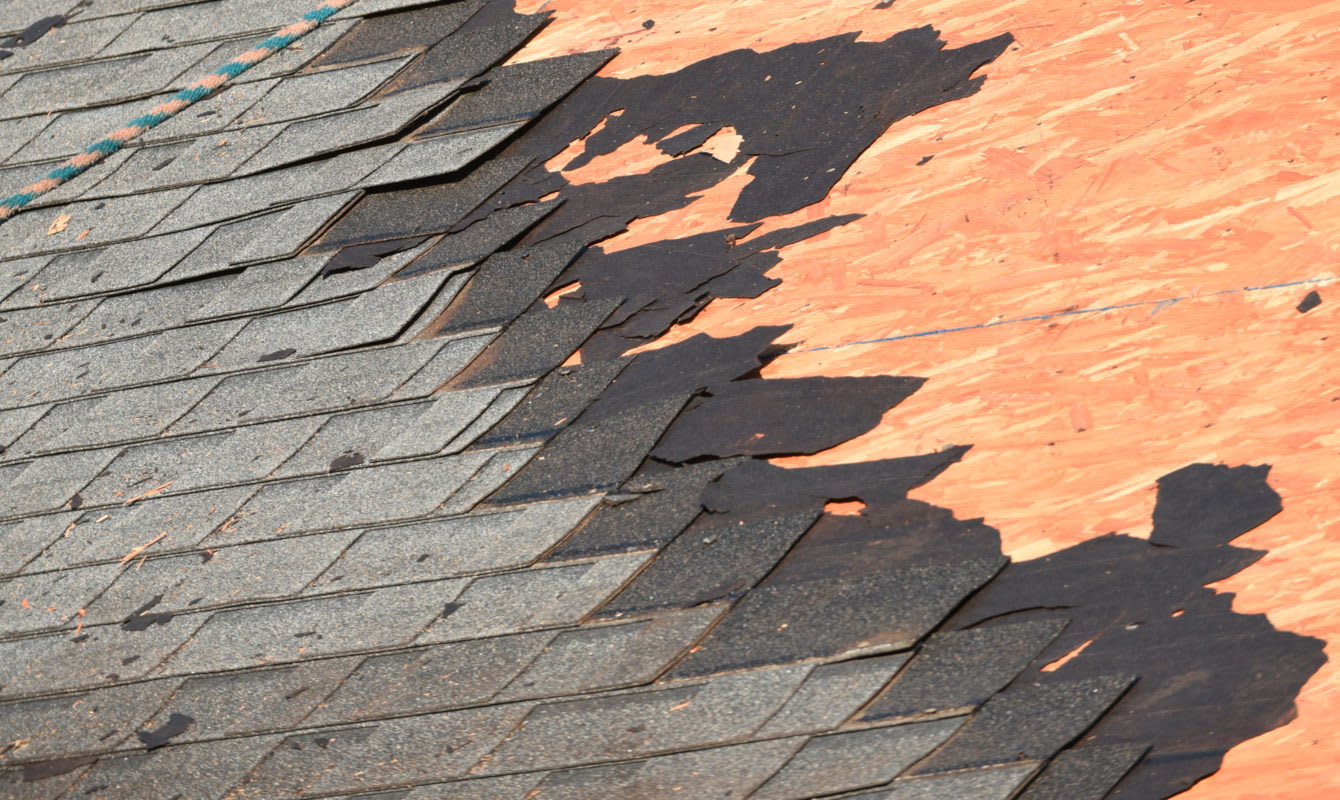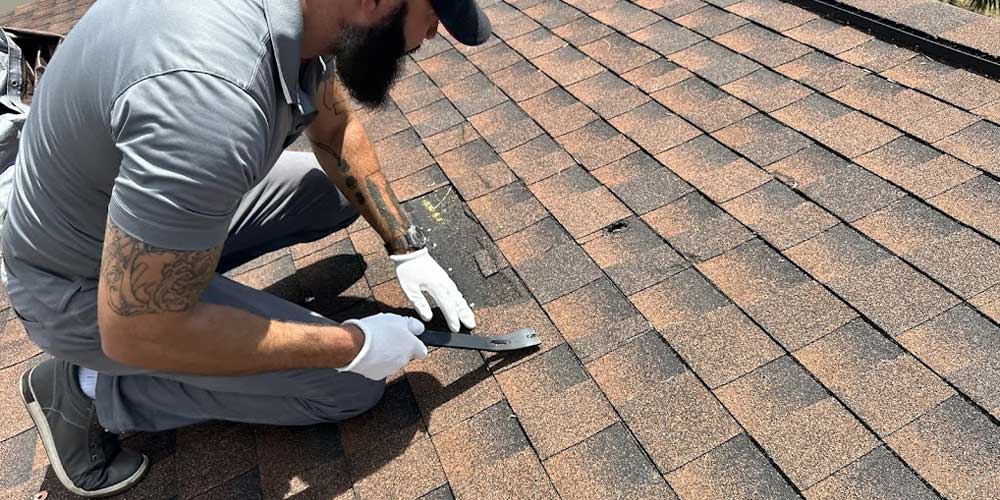Roofing Companies Oahu: Top-Rated Roofers for All Roofing Projects
Roofing Companies Oahu: Top-Rated Roofers for All Roofing Projects
Blog Article
Understanding the Different Sorts Of Roof Coverings: A Comprehensive Overview for Homeowners
In the world of homeownership, selecting the suitable roof design is a choice that brings considerable effects for both capability and visual allure. With a selection of alternatives-- varying from the typical gable to the modern level-- each kind provides special benefits and difficulties that ought to align with the property owner's particular requirements and environmental considerations. Comprehending these distinctions not just help in making an informed option but also influences lasting maintenance and power performance. As we check out the ins and outs of various roof kinds, it comes to be obvious that a person size does not fit all; the appropriate option may surprise you.
Saddleback Roof
Saddleback roofs, characterized by their triangular form, are amongst the most prominent roofing styles due to their simplicity and effectiveness in shedding water and snow. This design features two sloping sides that satisfy at a ridge, enabling for reliable water drainage and decreasing the risk of water build-up. The high pitch commonly related to saddleback roofs boosts their capability to handle heavy precipitation, making them appropriate for various climates.
In addition to their functional advantages, saddleback roofs supply aesthetic convenience. They can be adjusted to various architectural designs, from traditional to modern-day homes. The layout can likewise suit additional functions such as dormer home windows, which improve all-natural light and ventilation in the attic room room.
Furthermore, gable roof coverings offer enough space for insulation, adding to energy effectiveness. Property owners can select from a selection of roof materials, including asphalt tiles, metal, and floor tiles, further improving modification options.
Regardless of their advantages, gable roof coverings might require extra assistance in areas prone to high winds or heavy snowfall. Generally, the saddleback roof continues to be a popular choice due to its mix of functionality, longevity, and visual appeal.
Flat Roofs
Flat roofings are commonly acknowledged for their minimal layout and sensible applications, specifically in business and commercial settings (oahu roofing). These roofs include a nearly horizontal or straight surface area, which allows for easy building and construction and flexible space usage. While they may do not have the aesthetic appeal of angled roofs, flat roofing systems supply numerous benefits, particularly in urban settings where taking full advantage of space is essential
Among the main benefits of level roofs is their access. House owners can utilize the roof covering area for numerous functions, such as roof gardens, balconies, or solar panel installments. Furthermore, level roofing systems are typically a lot more cost-effective to mount and maintain compared to their sloped equivalents, as they require less materials and labor.
Nevertheless, level roofings do present specific obstacles. Appropriate water drainage is important to protect against water pooling, which can bring about leaks and architectural damages. For this reason, choosing high-grade waterproofing materials and normal assessments are critical for making certain longevity. Typical products utilized for level roofing systems consist of built-up roof covering (BUR), customized asphalt, and single-ply membranes, each offering distinctive advantages. Generally, level roofs act as a functional and adaptable selection for numerous homeowners and services alike.
Hip Roofings
Hip roof coverings are identified by their sloped sides that merge on top, creating a ridge. This style stands out from gable roofings, as all 4 sides of a hip roofing slope downwards toward the walls, offering a more stable structure. The angle of the slopes can vary, permitting adaptability in architectural visual appeals and performance.
One of the primary benefits of hip roofs is their ability to withstand heavy winds and adverse weather problems. The sloped surface areas allow better water drain, minimizing the danger of leaks and water damages. Furthermore, hip roofs supply boosted attic room, which can be used for storage and even exchanged livable locations.
Nonetheless, building a hip roofing can be extra complicated and costly than simpler roof kinds, such as gable roofs. The additional product and labor associated with creating the inclines and ensuring appropriate architectural stability can result in greater expenses. Regardless of these downsides, many home owners prefer hip roofing systems for their sturdiness, aesthetic allure, and potential for energy performance.
Mansard Roofs
Mansard roofings, typically acknowledged by their distinct four-sided design, feature 2 inclines on each side, with the lower incline being steeper than the upper. This architectural style, stemming from France in the 17th century, is not just cosmetically appealing yet useful, as it maximizes the useful space in the upper floors of a structure. The high you could check here reduced incline permits more headroom, making it an ideal option for attic rooms or lofts, which can be converted into living rooms.
Mansard roof coverings are defined by their adaptability, accommodating various building designs, from conventional to modern-day. They can be built with different materials, consisting of asphalt shingles, slate, or metal, giving house owners with a variety of alternatives to match their spending plans and choices. Furthermore, the style permits the assimilation of dormer windows, improving all-natural light and air flow in the top degrees.
Nonetheless, it is necessary to consider the prospective downsides. Mansard roofing systems might require even more upkeep due to the complexity of their design, and their steep inclines can be challenging for snow and rainfall drainage. On the whole, mansard roofs combine style with practicality, making them a popular choice amongst home owners seeking distinct building features.
Dropped Roofs
As house owners significantly seek simpleness and performance in their architectural layouts, dropped roofing systems have become a popular selection. Defined by a single sloping aircraft, a shed roof covering presents a minimal visual that complements numerous home styles, from contemporary to rustic.
Among the main advantages of a shed roof covering is its uncomplicated building, which frequently equates to decrease labor and material expenses. This style permits effective water drainage, reducing the danger of leaks and water damage. In addition, the vertical slope offers ample area for skylights, improving natural light within the inside.
Shed roofings also supply convenience in regards to use. They can be successfully incorporated into enhancements, garages, or outdoor frameworks like structures and sheds. Moreover, this roof covering design can accommodate numerous roofing products, including steel, asphalt roof shingles, or perhaps environment-friendly roofing systems, straightening with environmentally friendly efforts.
However, it is crucial to think about local climate conditions, as hefty snow tons might necessitate changes to the roof's angle or framework. On the whole, lost roofs provide a practical and aesthetically pleasing choice for home owners aiming to take full advantage of capability without jeopardizing style.
Final Thought


Gable roof coverings, characterized by their triangular form, are amongst the most popular roof covering styles due to their simplicity and performance in shedding water and snow. oahu roofing. The steep pitch frequently linked with gable roofing systems improves their capacity to deal with heavy rainfall, making them ideal for various climates
While they may do not have the visual appeal of pitched roofing systems, level roof coverings offer various benefits, specifically in city environments where maximizing area is vital.

Report this page